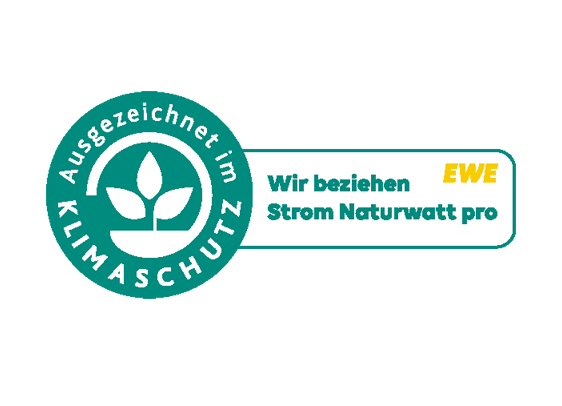
Luminaires produced with green electricity
WE-EF USES GREEN ELECTRICITY FROM 100% RENEWABLE SOURCES AT ITS GERMAN SITES
An important step on our way towards zero-emission, carbon-neutral production: The use of 100% green electricity at WE-EF in Germany since October 1st 2021 Switching to green electricity is an effective way to reduce the carbon footprint of private households, companies and public consumers alike. Green electricity comes from renewable energy sources – in contrast to conventional electricity from fossil fuels, such as coal and natural gas, or nuclear power. Renewable energy sources are first and foremost wind power, hydropower, solar energy and biomass. We have now completed this step – the climate certificate of our supplier EWE confirms that WE-EF is supplied with 100% electricity from renewable energy sources. These sources are clearly identified, and procurement of WE-EF’s luminaires contributes to the expansion of renewable energy. Sustainability is a key feature of our corporate mission We want a sustainable future for coming generations too, and this is why we as a company are committed to achieving the United Nations’ climate targets. In addition to the introduction of an energy management system in accordance with ISO 50001, the switch to green electricity is an element of our sustainability strategy. Sustainability is part of the corporate mission of WE-EF and the entire Fagerhult Group. For example, this means that the products are not only extremely energy efficient; they are also durable, the materials are recyclable and the luminaires have a modular, maintenance-friendly design. It also means that by introducing an energy management system in accordance with the DIN EN ISO 50001:2018 standard, WE-EF is committed to analysing and continuously improving all its energy-related activities. For example, we want to reduce energy consumption and the associated greenhouse gas emissions at our sites in Bispingen and Neuendorf im Sande. To this end, we are examining our total energy consumption of natural gas, electricity and diesel etc., the energy used and where it is used. This enables us to pinpoint the main energy consumers and derive optimisation potential. One of the greatest challenges for WE-EF will be to also equip energy-intensive production areas such as foundries and powder-coating plants for the future and to make them emission-neutral.
